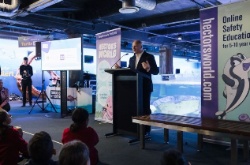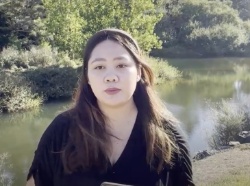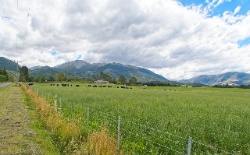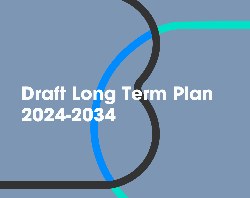GNS Reports After-Tax Profit Of $1.58 Million
30 October 2001
The Institute of Geological and Nuclear Sciences Limited (GNS) has posted an after-tax profit of $1.58 million for the year to June 30, up 13.4 percent on last year's result of $1.4 million.
The profit was achieved after GNS increased staff salaries by an average of 3.8 percent to start to bring pay into line with rates currently being paid to academics in New Zealand universities.
The Crown Research Institute's Annual Report, tabled in Parliament this week, shows a 13 percent return on equity - the fourth year in a row that GNS has achieved a return on equity of greater than 9 percent. Total revenue was $31.6 million (2000: $29 million), and total assets rose from $18 million to $25 million.
The smallest and one of the most scientifically diverse of the nine Crown Research Institutes, GNS's activities include assessment and mitigation of geological hazards, and providing advice on sustainable management of geological resources such as geothermal energy, groundwater, minerals, and oil and gas reserves. It is also New Zealand's leading organisation for developing isotope technologies to help industry, science, and the environmental sector.
GNS employs 256 staff, with 200 at Lower Hutt, 40 at Wairakei and 16 in Dunedin. Sixty-six percent of the Company's revenue comes from the government's Public Good Science and Technology Fund, with the balance from consultancy work for the private and public sectors.
Commercial revenues have grown 54 percent to $9.9 million since 1998, while revenue from the government's public good fund has increased only slightly over the same period.
Chairman Derek Milne said the market for public good research in geosciences was unlikely to expand in the near term, so attracting more commercial business within New Zealand and internationally was a key focus for the Company.
Dr Milne said it was important that GNS invested continually in new and improved scientific equipment so its staff could pursue research excellence and provide leading edge consultancy services.
During the past year GNS had invested $3 million in new scientific equipment and in new software needed to keep staff up with the latest technology internationally.
Acting Chief Executive Graham Clarke said the good financial performance had been achieved through improved market focus and building strong relationships with key client groups, continued emphasis on quality and on productivity improvements, and sound investment in capital equipment to support core business activities.
Staff numbers had remained relatively constant over the past three years. However, as senior staff had retired GNS had recruited high-calibre researchers who were making a major contribution to New Zealand science.
The Company is part-way through a $2.3 million upgrade of its isotope facilities in Lower Hutt. The upgrade would help ensure GNS's Rafter facility continued to offer commercial clients and the research community world-class capabilities in isotope sciences during the next decade, Mr Clarke said.
Another highlight for the year was the signing of a 10-year partnership with the Earthquake Commission to gradually upgrade the instrument networks that monitor earthquakes, volcanic activity, land stability, and geothermal activity in New Zealand.
Called GeoNet, the project will see EQC contributing $5 million a year for the next 10 years for GNS to buy, install and operate modern equipment to monitor New Zealand's geological hazards.
The more rapid, accurate, and comprehensive information provided by the upgraded networks would significantly improve New Zealand's readiness and ability to respond to a major earthquake or volcanic eruption, Mr Clarke said.
" Better quality information, and more of it, will also allow scientists to undertake new avenues of research that, internationally, are improving our knowledge and understanding of geological hazards."
The GeoNet project website - www.geonet.org.nz - has links to webcams at White Island and Mt Ruapehu with images updating every hour to show the level of volcanic activity.
ENDS


 Citizens of the Sea: Sailors To Revolutionise Our Understanding Of Pacific Biodiversity
Citizens of the Sea: Sailors To Revolutionise Our Understanding Of Pacific Biodiversity Netsafe: Making A Splash With Online Safety: Netsafe Launches New Flagship Programme For Kids
Netsafe: Making A Splash With Online Safety: Netsafe Launches New Flagship Programme For Kids NZGBC: Flood Resilience PhD Student Widi Auliagisni Named Future Thinker Of The Year 2024
NZGBC: Flood Resilience PhD Student Widi Auliagisni Named Future Thinker Of The Year 2024 Business Canterbury: European Free Trade Agreement A Game-changer For Canterbury
Business Canterbury: European Free Trade Agreement A Game-changer For Canterbury Business Canterbury: Urges Council To Cut Costs, Not Ambition For City
Business Canterbury: Urges Council To Cut Costs, Not Ambition For City Wellington Airport: On Track For Net Zero Emissions By 2028
Wellington Airport: On Track For Net Zero Emissions By 2028



